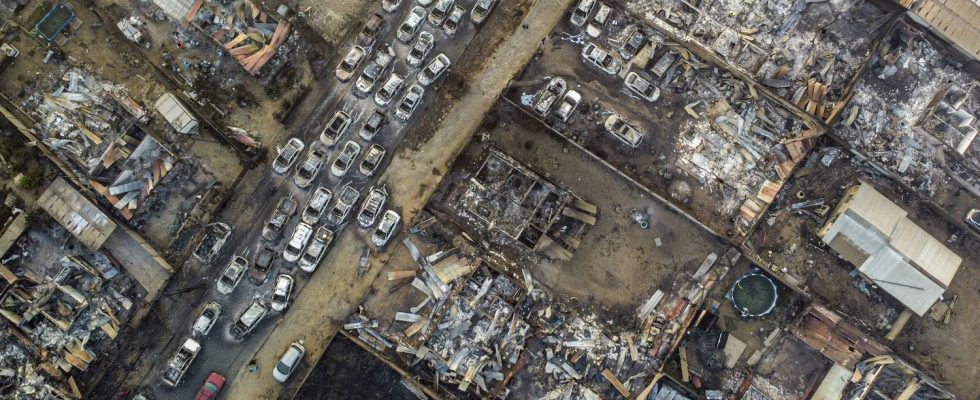“This is the biggest tragedy we have seen since the 2010 earthquake,” Chilean President Gabriel Boric said on Sunday.

Published
Update
Reading time: 1 min

Chile faces its deadliest tragedy in ten years. The fires ravaging the Valparaiso region, in the center of the country, have left at least 64 dead, according to a report communicated by President Gabriel Boric on Sunday February 4. “This number will increase, we know it will increase significantly”regretted the Head of State from Quilpué, located on the outskirts of the seaside resort of Viña del Mar.
In Quilpué, about 90 km northwest of Santiago, an AFP team saw entire neighborhoods and cars charred. Thousands of residents were stranded for several hours on Friday as they tried to flee by car. “This is the biggest tragedy we have seen since the 2010 earthquake”declared Gabriel Boric, in reference to the 8.8 magnitude earthquake which was followed by a tsunami on February 27, 2010. More than 500 people were killed.
Thousands of houses destroyed
After a lull, fires have resumed in the Valparaiso region. Since Friday, firefighters have been fighting tirelessly against dozens of homes in the regions of Valparaiso and O’Higgins in the center, but also Maule, Biobio, La Araucania and Los Lagos, in the south. Around thirty outbreaks remained active out of a total of 92 fires recorded and firefighters were trying to put them out using helicopters and planes. Violent winds fanned the flames and a pall of black smoke covered the streets, where explosions followed one another, AFP journalists noted.
In addition to human losses, between 3,000 and 6,000 houses were damaged or destroyed by the fires, according to an Interior Ministry official. The flames ravaged some 43,000 hectares of forest. Since Wednesday, the temperature has been close to 40°C in central Chile and the capital Santiago. This heatwave, which results from the El Niño climatic phenomenon, is currently affecting the southern cone of Latin America, causing forest fires worsened by global warming.
